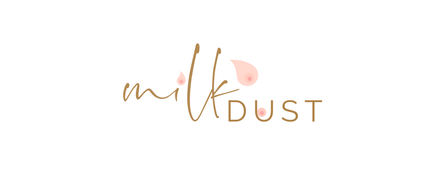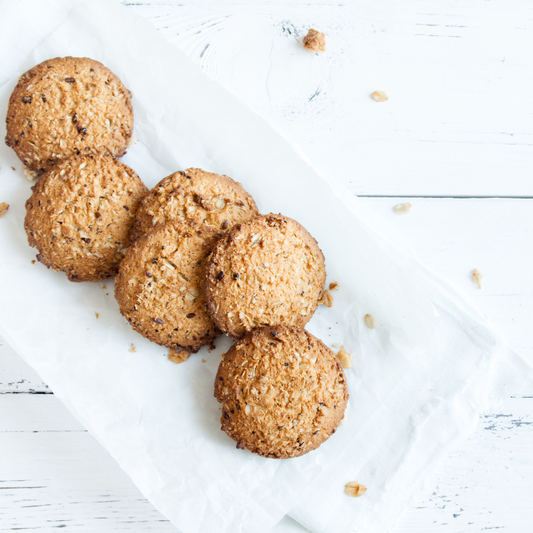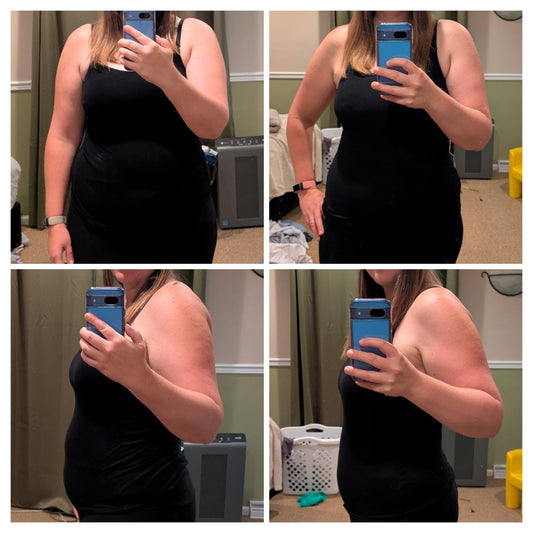Andrea Tran RN, BSN, MA, IBCLC
If you give birth by cesarean section, it will be the first of many times you will have to use your best multitasking mom super-powers. You will be recovering from both childbirth and major abdominal surgery.
According to recent statistics, about 32% of babies are born via cesarean in the USA. Let's talk about how things will be different for a cesarean mom and how you can help your body heal while you discover who your new baby is.
Your Surgical Incision
- The incision for a cesarean is about 4-6 inches long.
- It will be closed with either staples, stitches, or surgical glue.
- The incision will be covered with a bandage.
- The bandage is removed after 24-48 hours.
- You can usually shower after the bandage is removed.
- If your doctor used staples or stitches, they will be removed by your doctor or a nurse. This will happen either before you leave the hospital or when you go in for your first postpartum check-up.
- If surgical glue was used, it will peel off on its own.
- The nurse will give you instructions on how to care for your incision after you are discharged from the hospital.
- You will want to keep the incision clean and dry.
- Many moms worry that their incision can easily come apart. Don't worry. Normal activities will not cause your incision to separate.
Recovering From Anesthesia
Most cesarean births are performed under epidural or spinal anesthesia. Your lower body will remain numb for an hour or two after the surgery is completed. This will provide relief from the post-surgical pain in the first couple of hours.
General anesthesia may be required if a cesarean is an extreme emergency or if the epidural or spinal does not provide adequate anesthesia.
There will be a period of time after general anesthesia during which you will feel sleepy and out of it. You may not have strong memories of this time period.
Post-surgical Pain
A cesarean is major surgery and will be accompanied by significant pain. Fortunately, you will be given pain-relieving drugs.
For the first 12-24 hours, most doctors will order an IV pump that delivers narcotic pain medication in small doses every few minutes. There is usually also an option to give yourself more of the medicine with a little button you can push. This is called Patient Controlled Analgesia (PCA).
The alternative to a PCA pump is to get injections of narcotics every few hours. After the first 12-24 hours, most moms are able to control their pain with oral pain medication.
It is safe for your baby to breastfeed when you are taking these medications.
Postpartum Bleeding
The vaginal bleeding after a cesarean is similar to what is experienced a vaginal birth. [I would put a link here to the article about postpartum after vaginal birth – or you could just cut and paste the section on bleeding and put it here].
The nurses will need to check to make sure your uterus is staying firm. If your uterus starts to get soft, you could hemorrhage, so they may need to massage it. This is more painful after you have had a cesarean because of the incisions on your abdomen and uterus. Doing slow, deep breathing can help you through the period of discomfort.
Your uterus will contract the same way a mom who has a vaginal birth does. These after-pains can be very intense. The pain medications that you are taking for your incisional pain will also help with after-pain discomfort.
Antibiotics
You may be given antibiotics during the surgery to reduce the risk of infection. Antibiotics can increase the risk of developing a yeast infection. Discuss with your doctor whether you should take a probiotic to help decrease this risk.
Bladder and Bowels
Before your c-section, they will put a urinary catheter in your bladder. This is to keep it drained during the surgery, which decreases the risk of it getting nicked.
Having a catheter increases the risk of developing a urinary tract infection. Drinking lots of water and emptying your bladder regularly will help minimize this risk.
Call your doctor if you develop pain or burning with urination.
Emotions
Any birth is a tremendously emotional experience. Cesarean moms may feel even more emotional.
- Moms may be grieving the loss of their expected birth experience.
- Having surgery may have been a scary experience.
- A more extended healing period can be frustrating.
Moms who give birth by cesarean section do experience postpartum depression more often than moms who give birth vaginally. The rate is even higher if they stop breastfeeding before twelve weeks.
- Give your body the time it needs to heal from the surgery.
- Accept offers of help.
- Seek out help with breastfeeding problems. Do this as soon as possible.
- Focus on taking care of yourself and your baby.
- Be patient with yourself.
- Find and join groups for postpartum moms. The hospital where you gave birth should be able to let you know what is available in your community.
- Keeping a journal can help you process your birth and postpartum experiences.
- If you are feeling sad, overwhelmed, or disconnected from your baby, reach out to your healthcare provider. She can help you find a counselor who specializes in postpartum depression.
Breastfeeding Challenges
- A cesarean usually means a delay in doing skin-to-skin with your baby and getting started breastfeeding.
-
It will be more challenging to find comfortable positions when breastfeeding.
- Football hold keeps the baby away from your tender incision.
- Avail yourself of all the help you can get in the hospital from the nurses and lactation consultants.
- Give yourself extra time to get comfortable before breastfeeding. Use pillows to help support the baby.
Warning Signs of When You Should Call Your Doctor
- Fever higher than 100.4°F
- Worsening pain at the site of your incision
- Swelling or redness from the incision site
- Incision oozing pus
- Vaginal discharge has a bad smell
- Heavy vaginal bleeding
- Pain, swelling or redness in your leg
- Chest pain, difficulty breathing or shortness of breath
Nutrition For Recovery:
Feed your body nutritious food so it can heal from the surgery. Specifically phytonutrients, vitamin C and protien are super important to healing postpartum both from vaginal and cesarean birth. Milk Dust created both Bump Dust and Milk Dust with additional nutrients to help with recovery after birth. They provide superfoods like Spirulina and Chlorella provide extra antioxidants and phytonutrients to help your body heal.
- Protein
- Vitamin C
- Whole grains
- Fresh fruits and vegetables
- High-fiber foods can help minimize the common post-surgery problem of constipation
Smoothies full of fresh and frozen fruit are amazing for getting in a lot of nutrients quickly. Milk Dust has a great
recipe book that will give you some healthy smoothie ideas for your postpartum recovery. They also have some more nutrient-dense recipes here on their blog as well. The new
Milk Dust Bars are also full of nutrient-dense ingredients that are perfect for on-the-go recovery.
Exercise
It takes at least six weeks to three months to recover from a surgical birth.
At first, just getting out of bed may feel like a workout. Take your time. Make sure you stand up nice and straight.
Taking walks up and down the hospital halls is important to keep your lungs clear, your GI system moving and your blood flowing.
Continuing leisurely walks around your neighborhood is an excellent way to get some mild exercise. Ask your doctor when you can start other forms of exercise. They will often want you to wait until your six-week check-up before you engage in any vigorous activity
Get As Much Rest As You Can
Let's be honest, as a new mom, you will not be getting long stretches of sleep. But adequate rest is essential for healing.
- Make naps a priority.
- Even if you don't consider yourself a napper, you should lay down and close your eyes.
In the beginning, being a new mom and taking care of a baby will be harder after a cesarean section. But if you take care of yourself, you will recover and be able to focus on things like mastering bath time and speed diapering.



